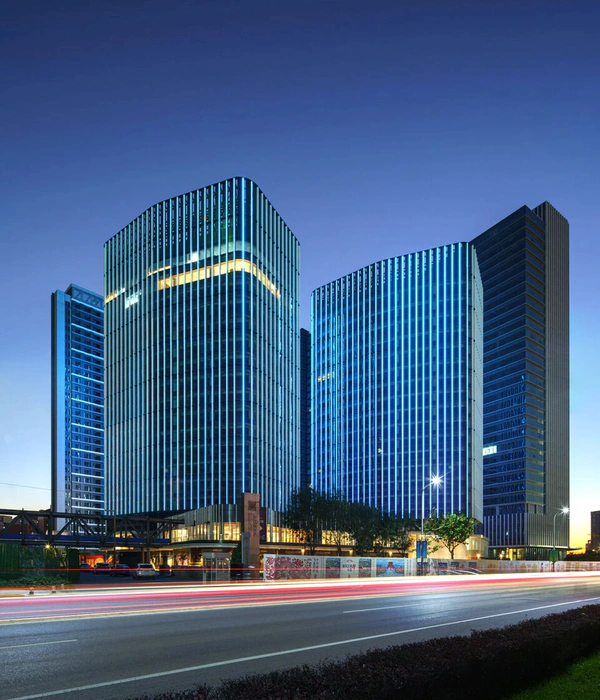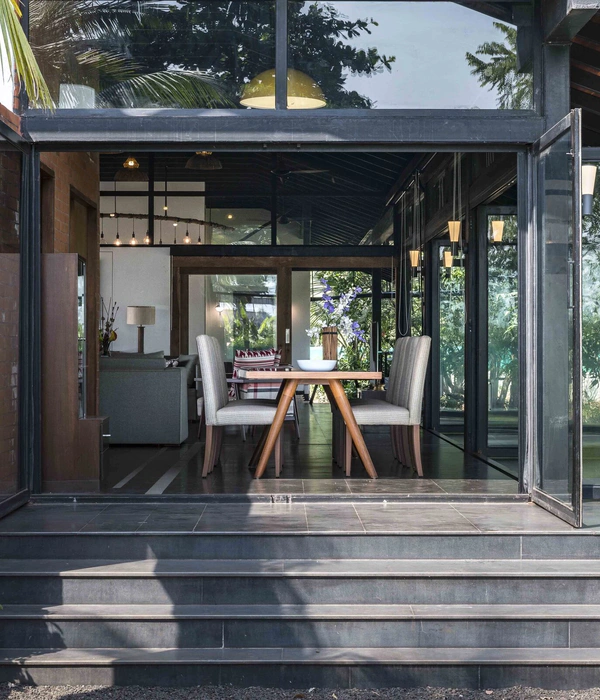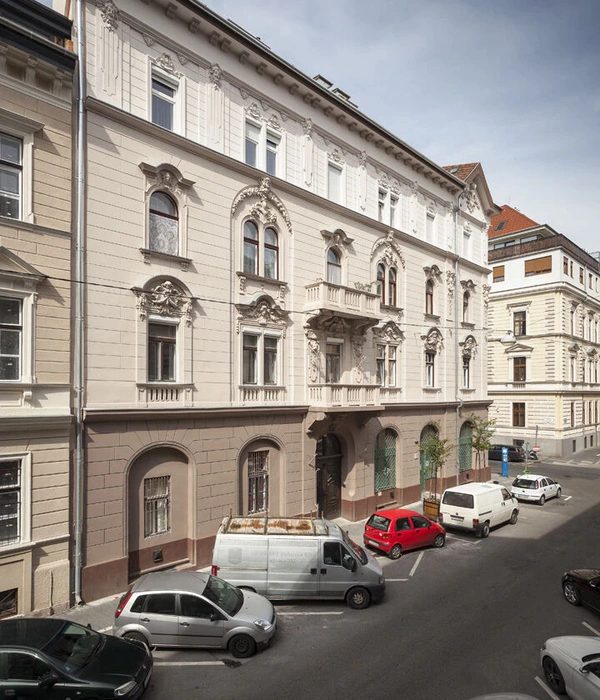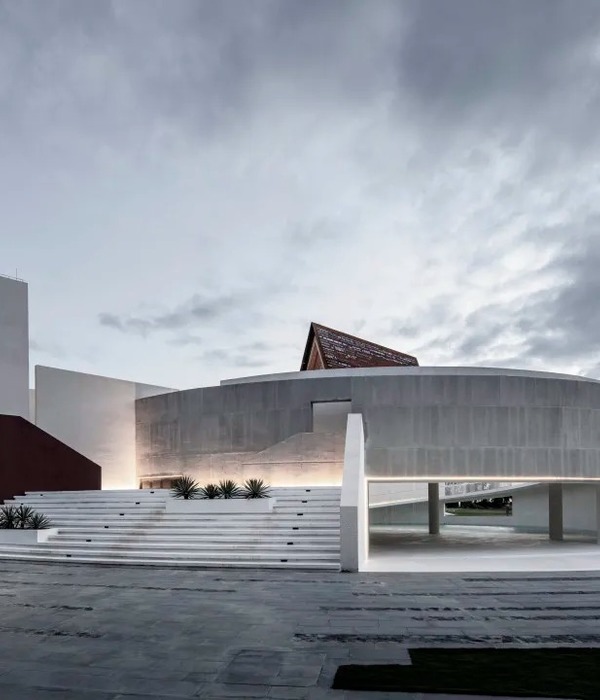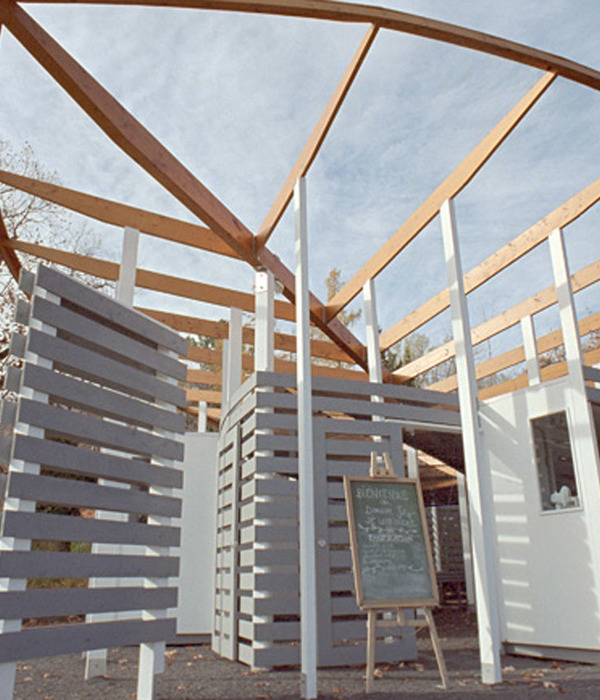Architects:Federico Marinaro Arquitecto
Area :847 m²
Year :2021
Photographs :Javier Agustín Rojas
Architect : Federico Marinaro
Associate Architect : Sofía Settimini
Collaborators : Bruno Turri, Giuliana Colaneri, Juan Cruz Ferreyra, Manuel Giró, Ramiro Busnelli
Engineering : Luciano López
Construction : Puntal SRL
Carpentry : Gonzalo Marinaro
Aluminum Work : Claudio Valenti
City : Rosario
Country : Argentina
To describe the argumentation that supports this project, we find it interesting to start with a question: How to reconcile the different resources we have for future living, for producing an architecture that operates within the real estate market? Within the uniqueness of the productive, constructive, and social economy, that is, the resource economy of Argentina in 2019-2021, we propose the description of a specific and local model in which the economy, logistics, resources, production systems, and a certain aspect of industrialization through metal structures became a working system for the studio, in certain projects underway and specifically in this recently completed work.
Taking advantage of these circumstances, this context, and opportunity, we wanted the commission to serve to propose a debate, and try to operate outside the local production of high-rise residential buildings. In this way we work with a practical and pragmatic system, conceptualizing this working system, the idea of the architect working with systems against models. Four references are proposed: a certain aspect of the industrial architecture of the 20th century, Venturi and Scott Brown in (Learning Las Vegas), Atelier Bow-Wow in (Made In Tokyo) and Enrique Walker in (The Ordinary). These four references are clearly different from each other, but share fundamental issues: they operate from the bottom up, they work with reality, and they are pragmatic and alien to abstract models. They are a system that allows operating on the margins of the discipline.
The four approaches converge in an architecture that is produced as a result of the use and strategic manipulation of productive means and reality, and not of an aesthetic program, or by application of a method. When we transfer it to our work system in our studio, specifically to Building A01, we are not only inspired by these ordinary and generic architectures, but we also use industrial systems to take advantage of them. And to this system of "pieces and parts" that seems neutral, we try to add value and work with it based on its own rules. The project aims to move in this fine line between the ordinary and the extraordinary of architecture.
These questions of the ordinary, architecture without architects, and the cultural and productive contexts that generate working systems within which architects like us work, are important from the point of view of professional practice because they show that we can work starting from what there is and produce an added value on it. The project is part of a series of commissions to create high-rise rental buildings for tourists and for mixed-use in the city of Rosario, province of Santa Fe, Argentina.
The promoters of these projects belong to the steel industry, which establishes an initial constraint on the use of material and technological resources. The peculiarity of the commissions lies in the fact that the promoters leave the complete development of the commissions to our studio. It is our task to identify the potential lots and the needs of the neighborhood in which they are located, establishing the corresponding program and development.
The objective was to implement a working system and a methodology relating the initial problems and the arguments developed in the Descriptive Memory. In other words, the fact that our client sold metallic profiles and steel tubes was an initial constraint that we tried to transform into an opportunity for the development of the work.
In this way, the use of structures with preformed elements ends up becoming a symbolic system typical of the economy of construction, the economy of resources, but it also has to do with the architectural symbolic expression rooted in the interior productive territory of Argentina, which are port structures and industrial buildings.
By the use of these structures, it is possible to create an architecture that has that character of neutral programmatic support, within the standard production systems. One that at the same time has a character that acquires a symbolic value, that tradition that Enrique Walker proposes. In this way, an argument that transcends limits can be built, a more sophisticated production than that of the prototype. Because as Federico Soriano says, “A prototype is an instrument to materialize an idea and explore or verify its relationship with reality. It is about creating something, making a physical artifact, testing, exploring, or communicating the design ideas of a thing or architectural object that is going to be projected." A prototype generates empathy, since it deepens the understanding of the architectural object by users, clients, and also by those who are going to build or manufacture it.
▼项目更多图片
{{item.text_origin}}


